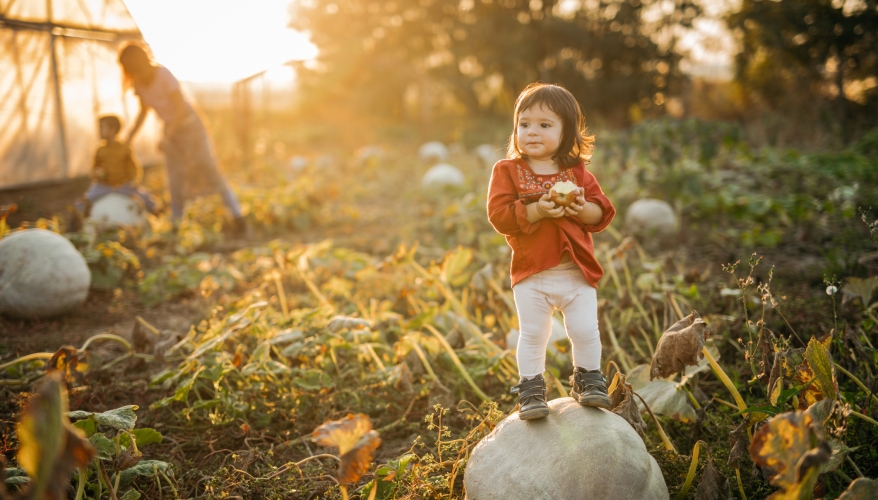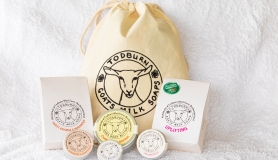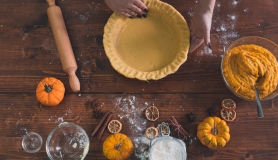I embraced our move from a bustling town to life in the country. After all, it would be so much easier being green in a small cottage in the countryside, wouldn’t it? What I didn’t expect was a different set of ecological challenges to face. We have down sized our home, managed to recycle more and reduced our household waste. But, unfortunately, I seem to be using the car more often. However, since we now have a cottage with a large garden I am finally able to fulfil my dream of composting and having an organic vegetable plot. I have long harboured fantasies of picking lettuce and tomatoes and making a salad from produce that we had grown ourselves. I was delighted to find that my husband and children share my dream.
Protecting the crop
I think our first mistake was being so excited by the wild rabbits playing in our garden that we started to feed them. Thereafter the lettuce, cabbage and broccoli were seen as a thoughtful gift from us to the rabbits. We had high hopes for the strawberries, and in fact managed a large crop, of which we ate four. The net, scarecrow, bits of tin foil and copper strips to discourage the birds and slugs provided a festive setting for their feasting. We are still uncertain about what happened to the cucumbers. And then there were the pumpkins.
Pumpkins galore
Over one million pumpkins are sold in the UK in the run up to Halloween. According to Recycle Now 99% of these end up on landfill sites afterwards. With these truly scary statistics in mind we decided to grow our own pumpkins and to make sure we recycled every bit of them. My children planted the seeds in trays indoors; we were worried about the combination of seedlings and hungry bunnies. Needlessly, as it turns out. Pumpkins like well-drained soil with a pH of around 6.0. We planned for our pumpkins to mature by Halloween so we planted at the end of June. We transplanted the seedlings into the vegetable patch and made sure we dug in plenty of organic material. We made sure each of the seedlings had plenty of space, around three feet between each so they could grow. And grow they did. The pumpkins vines produced large yellow flowers that opened during the day and closed at night. My youngest daughter expressed the view that maybe they weren’t pumpkins but plants from magic beans. After all they weren’t being eaten by rabbits or slugs. Pumpkins prefer soil that isn’t too wet so we watered them infrequently with a soaker hose.
Sharing the harvest
The pumpkins turned out to be an excellent way for my children to make friends in a new area. When they invited friends for tea they were amazed by the amount the pumpkins had grown. In fact when we finally harvested we were able to give out pumpkins to new friends and still have quite a glut for ourselves.
Waste not, want not
That left the challenge of making sure that not one piece of the pumpkin was wasted. We baked the seeds, using them for snacks and feeding them to the birds and our pet hamster. We used them in craft projects, threading them like beads to make necklaces. Next, from the flesh, we made pumpkin soup, pumpkin casserole, pumpkin bread and even chocolate brownies using pumpkins. The remaining we used for carving Halloween lanterns and once the candles had finally gone out, these were cut up and put on the compost heap.
Baking pumpkin seeds: Separate the seeds from the membrane and rinse. Soak them in salt water overnight. Spread the seeds on a non-stick baking tray and bake for 20 minutes at 350 degrees. I like to sprinkle a little salt on mine.
Make a pumpkin bowl: Scoop out the inside membrane and clean. A typical pumpkin holds up to four pints of soup or a casserole and adds flavour, too.
Pumpkin Bread: Makes two loaves. 8 oz bread flour; 6 oz honey 2 tsp baking soda; 1 tsp salt 2 tsp ground cinnamon 1 tsp ground nutmeg 4 oz pureed pumpkin 2 oz vegetable oil 4 eggs; 2 oz chopped walnuts Grease and flour 2 (9 x 5 x 3-inch) loaf pans. In a large bowl combine flour, sugar, baking soda, salt, cinnamon and nutmeg. Mix together pumpkin and vegetable oil. Add eggs, one at a time, beating well. Add pumpkin mixture and stir just until flour is moistened. Add nuts. Pour into prepared pans and bake in 350 degrees oven for 1 hour or until you can prick with a tooth pick and remove it clean. Remove from oven and cool 10 minutes before removing from the loaf tins. When completely cool, wrap and store overnight.
Pumpkin soup: 1 large pumpkin 2 cloves garlic, chopped 1 medium red chilli, chopped 1 can coconut milk or cream lots of coriander leaves salt and pepper Cut the pumpkin into quarters. Scoop out the seeds and remove the skin. Chop the flesh into small chunks and cook in boiling water until soft. Meanwhile, add the chilli, garlic, half the coriander, salt and pepper to a blender until well blended. When the pumpkin is soft, drain the cooking water but reserve it. Put the pumpkin into the blender with the chilli mix and blend. Put the mixture back into a saucepan, add the coconut milk and simmer. If it is too thick, add some of the reserved cooking water. You can serve in large bowls or a pumpkin. Add the remaining chopped coriander for garnish.







